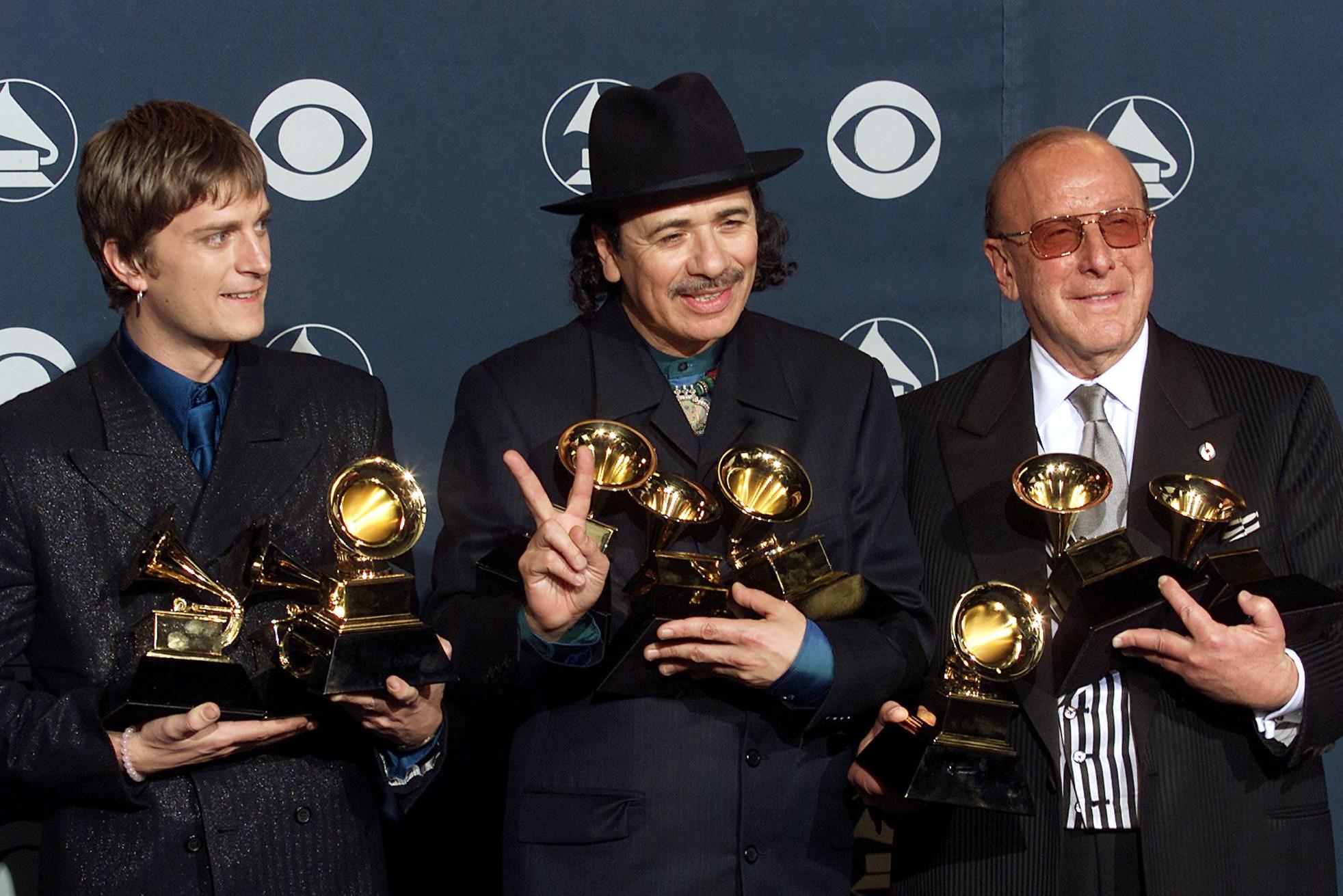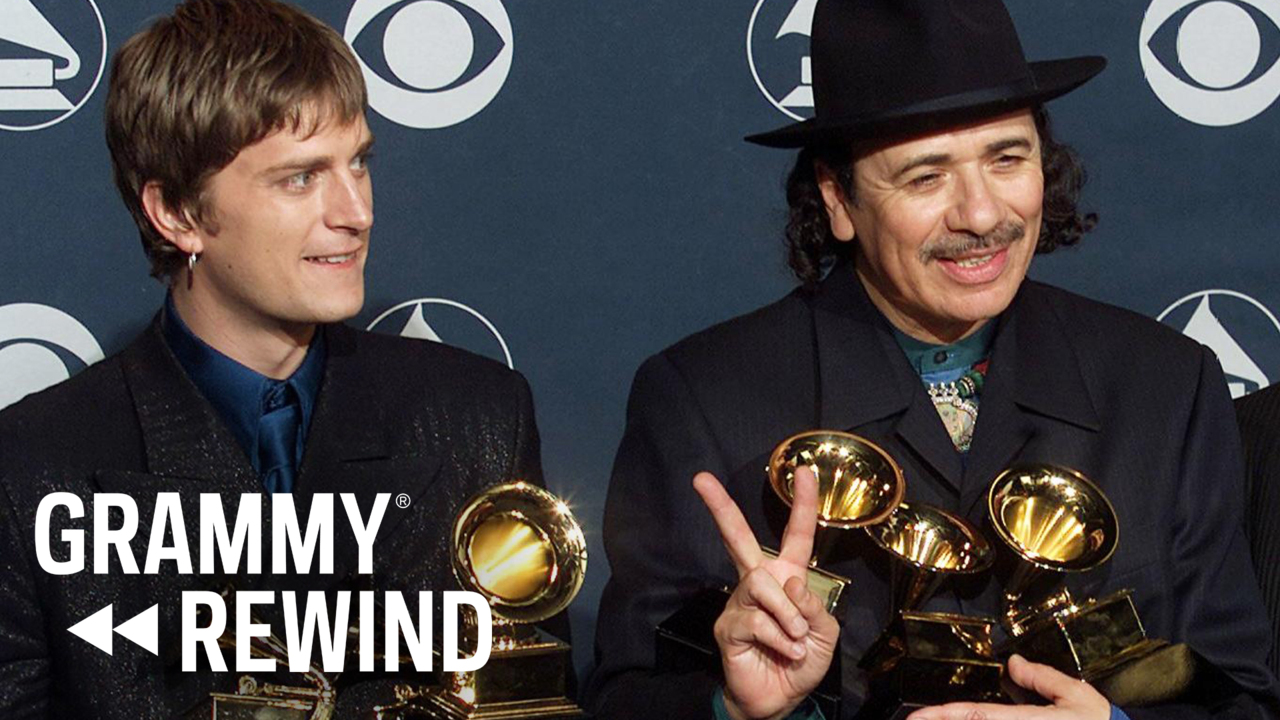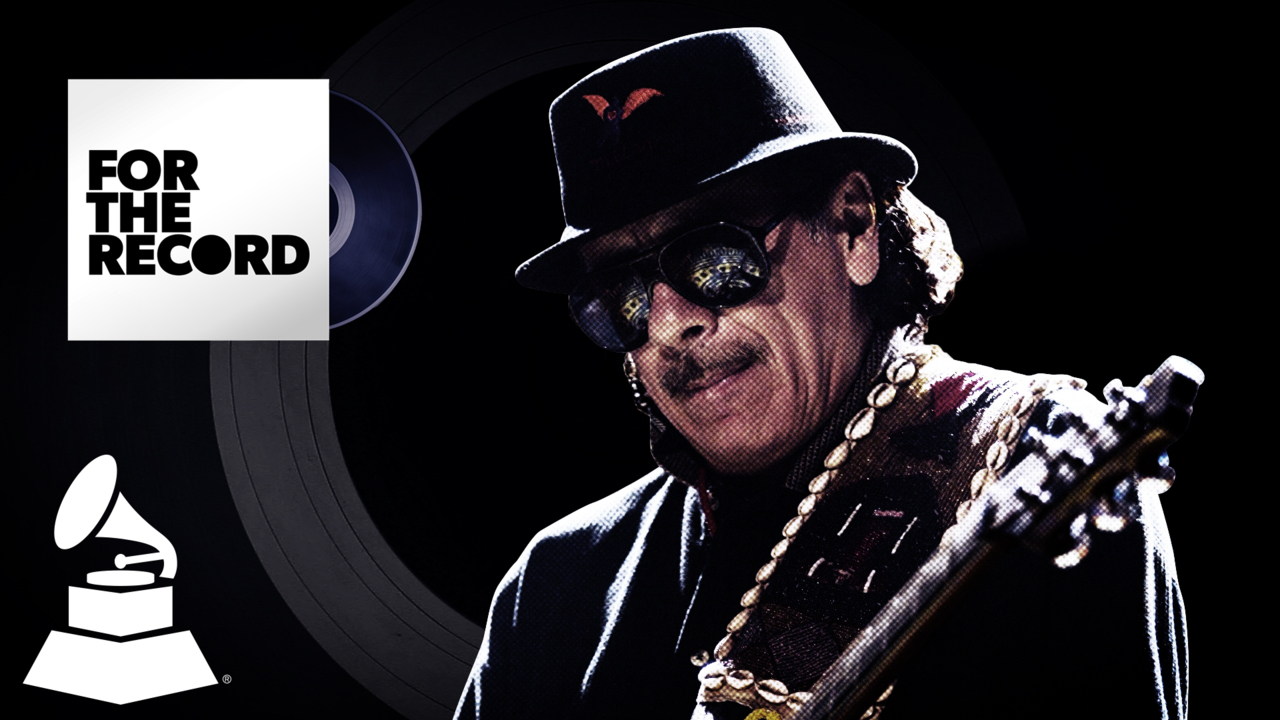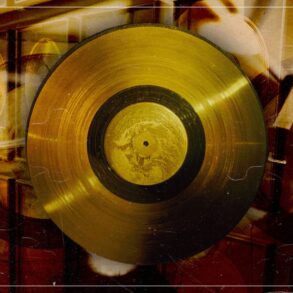For over 50 years, the GRAMMY Hall Of Fame has celebrated the recordings that have defined the sound and evolution of music throughout the decades. The official home of the songs and albums that have soundtracked our daily lives, the GRAMMY Hall Of Fame honors recordings of lasting qualitative or historical significance. While eligible recordings must be at least 25 years old, the GRAMMY Hall Of Fame serves as a vital bridge between music’s past and present, connecting the sounds of yesterday with the music shaping culture today.
The Recording Academy and GRAMMY Museum expand this legacy with the 2025 inductee class of distinguished recordings to be inducted into the GRAMMY Hall Of Fame today. Spanning generations and genres, the 2025 GRAMMY Hall Of Fame inducted recordings comprise timeless anthems and genre-defining albums that have left an indelible mark on music history, including: Jay-Z‘s debut album, Reasonable Doubt, widely recognized as one of the greatest rap albums of all time; Big Star’s #1 Record, a power pop classic that helped evolve alternative rock; Gloria Estefan‘s & Miami Sound Machine’s “Conga,” a progenitor of the Latin music revolution of the late-’90s and today; and many more. These recordings, which include eight albums and five singles newly inducted into the GRAMMY Hall Of Fame, now join this prestigious canon. With these 13 newly inducted titles, the GRAMMY Hall Of Fame currently houses 1,165 inducted recordings.
“The importance of the GRAMMY Hall Of Fame lies not only in honoring classic works, but also in preserving the cultural, artistic, and social history of recorded music,” Nick DiFruscia, Senior Director of Awards at the Recording Academy, told GRAMMY.com in an interview. “A recording’s induction into the GRAMMY Hall Of Fame is a critical act of music preservation, ensuring that the most important recordings in music history are recognized, remembered and protected for future generations. It’s also an important resource tool for musicians, educators, historians, and fans, helping them understand how certain recordings influenced genres, recording technology, and the pure craft of music making.”
The Recording Academy and GRAMMY Museum will celebrate the 2025 GRAMMY Hall Of Fame inducted recordings at the 2nd Annual GRAMMY Hall Of Fame Gala, which takes place tonight at the Beverly Hilton in Los Angeles. The Gala will feature a full night of honored guests and one-of-a-kind tribute performances honoring the newly inducted recordings, including performances from 13-time GRAMMY winner and Recording Academy Lifetime Achievement Award honoree Emmylou Harris; GRAMMY-winning singer and actor Leslie Odom, Jr.; musician, author and Bangles co-founder Susanna Hoffs; Latin GRAMMY nominee, singer/songwriter and actor Leslie Grace; and many others. Rising singer/songwriter Conan Gray and legendary GRAMMY-winning singer/songwriter John Mellencamp will also perform as part of a special tribute to Republic Records, this year’s Gala label honoree. See the full list of performers at the 2025 GRAMMY Hall Of Fame Gala.
The Gala will also include the presentation of the inaugural Ray Charles “Architect of Sound” Award, which will be awarded to multi-GRAMMY-Award-winning composer and bandleader Jon Batiste. Created in partnership with the Ray Charles Foundation, the new annual honor recognizes an artist whose creative legacy reflects the visionary innovation of Ray Charles.
Proceeds from the 2025 GRAMMY Hall Of Fame Gala will support the GRAMMY Museum’s national music education programs, which provide inclusive, memorable, and enriching educational opportunities and experiences with music to students in Los Angeles and beyond.
In honor of the 2025 GRAMMY Hall Of Fame inducted recordings and ahead of tonight’s Gala, listen to and learn more about the 13 newly inducted titles below, and explore the full sonic spectrum of the GRAMMY Hall Of Fame.
—Intro by John Ochoa
Big Star — ‘#1 Record’ (Ardent, 1972)
Released in 1972 on Ardent Records, a subsidiary label of Stax Records, #1 Record, the debut studio album from Memphis rock band Big Star, has influenced generations of artists and bands across the world. The sounds of everyone from the Replacements and R.E.M. to England’s Primal Scream and Scotland’s Teenage Fanclub can be traced back to the album. Today’s leading artists and established legends alike have covered several songs from #1 Record throughout the years, including Elliot Smith and Yeah Yeah Yeahs (“Thirteen”), Juliana Hatfield (“Don’t Lie to Me”), and Jason Isbell and the 400 Unit (“When My Baby’s Beside Me”).
Formed in 1971 by Alex Chilton (vocals/guitar) and Chris Bell (vocals/guitar) — who together are considered the Paul McCartney and John Lennon of power pop — along with Jody Stephens (drums) and Andy Hummel (bass), Big Star’s early musical style drew influence from ’60s British Invasion acts such as the Beatles and the Byrds. Driving, jangly guitars, anthemic harmonies and melancholic lyrics defined their distinct sound. While Big Star released two more albums through the late ’70s, #1 Record is the only album with the combined songwriting power of Chilton and Bell.
Though it sold fewer than 10,000 copies upon its initial release due to issues with distribution, #1 Record remains a critically acclaimed cultural landmark. It ranks at No. 188 in the third edition of Colin Larkin’s All Time Top 1000 Albums book, released in 2000. Rolling Stone listed the album in its all-encompassing 500 Greatest Albums of All Time list, while album single “Thirteen” also ranks in the magazine’s 500 Greatest Songs of All Time list.
To this day, Big Star’s #1 Record is widely lauded as a classic in the power pop genre, a sound the band helped define, and a cornerstone in the evolution of alternative rock.
Explore More: Celebrating Big Star’s #1 Record: How The GRAMMY Hall Of Fame Entry Inspired Generations
Linda Martell — “Color Him Father” (Plantation Records, 1969)
Linda Martell, born Thelma Bynem in South Carolina, broke racial barriers in 1969 when she became the first commercially successful Black woman in the country music genre with her cover of “Color Him Father.” The song was a Top 25 hit on the Billboard country music chart and led to a performance by Martell at the Grand Ole Opry, where she made history again as the first Black woman to grace the revered stage. As one of the first Black country artists, Martell helped pave the way for future country artists of color, including Mickey Guyton, Rissi Palmer and Kane Brown. Beyoncé salutes Martell on her GRAMMY-winning album, Cowboy Carter: The pioneering country singer appears in the introduction to “Spaghetti” and on the 28-second interlude titled “The Linda Martell Show.” Martell’s version of “Color Him Father” peaked at No. 22 on the country chart and was the highest-charting song by a Black woman on the chart for more than 50 years until Beyoncé’s “Texas Hold ‘Em” reached the top spot in 2024.
“Color Him Father,” which was first recorded as a pop song by the Winstons, appeared on Martell’s first and only album, Color Me Country. Released in 1970, the album reached No. 40 on Billboard‘s Top Country Albums chart. Produced by Shelby Singleton, the album would later go on to inspire the title of Palmer’s Apple Music podcast, “Color Me Country.” Other singles on the album include Martell’s cover of Duane Dee’s “Before the Next Teardrop Falls,” which peaked at No. 33 and was later recorded by Freddy Fender, and “Bad Case of the Blues,” which peaked at No. 58.
Though she experienced success and made history with her music, Martell’s career was short-lived: She left Nashville in 1974, fueled in part by the racism she faced during that time. “A lot of times, you feel like saying, ‘OK, look here, I don’t wanna hear that. Please quit calling me names like that.’ But you can’t say that. You can’t say anything,” she told Rolling Stone in 2020. “All you can do is do your singing and try your best to forget about it.” Still, her influence continues to live on in the generations of Black country artists who came after her.
Explore More: What’s The Future For Black Artists In Country Music? Breland, Reyna Roberts & More Sound Off
Gloria Estefan & Miami Sound Machine — “Conga” (Epic Records, 1985)
When Gloria Estefan and the Miami Sound Machine released Primitive Love — their second English-language album — in 1985, there was little sign of Latin music on the pop charts. But that all changed with the album’s first single, “Conga.”
Written by Miami Sound Machine drummer Enrique Garcia, “Conga” blended salsa, pop and dance music, becoming a massive worldwide success and introducing infectious Latin rhythms to mainstream pop culture along the way. The group’s first charting single on the Billboard Hot 100, the song reached the Top 10 in various countries. “Conga” won the Grand Prize at the 15th Annual Tokyo Music Festival in Japan and was certified gold by the RIAA. Billboard listed it at No. 40 on its year-end chart in 1986. “Conga” was also featured in the Tony-winning Broadway musical “On Your Feet!” — which debuted at the Marquis Theatre in New York and is based on the lives of Gloria Estefan and her husband, Emilio Estefan.
Hailed as the “Queen of Latin Pop,” Gloria Estefan helped put Latin music on the pop map by bringing her Cuban musical heritage to the masses. Considered the most successful Latin crossover artist in music history, according to Billboard, Estefan has won four GRAMMY Awards and four Latin GRAMMY Awards. With more than 100 million records sold worldwide, Estefan has also received the Library of Congress Gershwin Prize for Popular Song and the 2015 Presidential Medal of Freedom. In 2014, Estefan was inducted into the Songwriters Hall of Fame, and in 2017, she became the first Cuban American singer/songwriter to receive a Kennedy Center Honors. She’s a member of the Latin Songwriters Hall of Fame, and in 2023, she became the first Hispanic woman to be inducted into the Songwriters Hall of Fame. She was honored as the Latin Recording Academy Person of the Year in 2008.
With “Conga” and the subsequent hits that followed, Gloria Estefan helped open the door for future Latin music icons, such as Jennifer Lopez, Ricky Martin and Shakira. A cultural phenomenon when it was originally released nearly 40 years ago, “Conga” remains an enduring dance-floor classic to this day.
Explore More: How Gloria Estefan Crossed Latin Music Boundaries On Her Second Spanish-Language Album Abriendo Puertas
Clara Ward — “How I Got Over” (Gotham, 1951)
Written and performed by one of the most revered singers in gospel music, Clara Ward‘s “How I Got Over” is one of the quintessential songs of the genre. Ward is said to have penned the song following a terrifying episode she, her sister Willa, their mother Gertrude, and members of their singing group experienced while traveling through racially segregated states in the South in 1951. While on the road to Atlanta, a group of white men surrounded them, enraged to find a group of Black women riding in a luxurious Cadillac. The men surrounded their vehicle and proceeded to terrorize them with racist slurs. The men eventually fled, but only after Gertrude Ward pretended to be possessed and spewed curses and incantations at them. The song went on to sell 1 million copies and became one of the best-selling gospel songs of all time.
Several artists recorded versions of “How I Got Over” throughout the years, including Mahalia Jackson, who won the GRAMMY for Best Soul Gospel Performance for her version at the 1977 GRAMMYs. Jackson would also perform “How I Got Over” at the historic March on Washington for Jobs and Freedom in 1963. Aretha Franklin recorded an up-tempo version of the song for her 1972 album Amazing Grace, and the Blind Boys of Alabama featured the song on their 2008 album Down in New Orleans.
Born in 1924 in Philadelphia, Clara Ward gained notoriety for adopting the lead-switching style, which was previously used by mainly male gospel quartets. This gave the opportunity for others in her singing group, like Marion Williams, the chance to perform lead vocals. As leader of the Famous Ward Singers, Ward began touring nationally in 1943. In 1950, the Ward Singers made their debut at Carnegie Hall where they shared the stage with Mahalia Jackson. In 1963, Ward became the second gospel singer to perform gospel music on Broadway in Langston Hughes’ play “Tambourines to Glory.”
Ward died in 1973 at 48 after suffering several strokes. Performers at her funeral in Philadelphia included Aretha Franklin and Rev. C.L. Franklin. In 1977, Ward was posthumously inducted into the Songwriters Hall of Fame. In 2018, “How I Got Over” was selected by the Library of Congress for preservation in the National Recording Registry.
J.D. Crowe and the New South — ‘J.D. Crowe And The New South’ (Rounder, 1975)
Celebrating its 50th anniversary this year, J.D. Crowe And The New South — widely known by its Rounder Records catalogue number 0044 — marked a historic change in bluegrass music. Banjo player J.D. Crowe, along with his bandmates Tony Rice (guitar), Jerry Douglas (dobro), Ricky Skaggs (mandolin), and Bobby Slone (fiddle), brought bluegrass into the modern era.
The follow-up to the group’s Bluegrass Evolution (1973), And The New South marked a sharp stylistic departure. While it still experimented with pedal steel, percussion and piano on tracks such as “You Are What I Am” and “Cryin’ Holy,” most of the album featured songs using traditional bluegrass instrumentation by singer/songwriters like Gordon Lightfoot, Utah Phillips and Rodney Crowell. And The New South is considered to have made a pivotal impact on the nature and direction of bluegrass music.
The track list features the first New South recordings of “Old Home Place,” “Some Old Day,” “10 Degrees and Colder,” “Cryin’ Holy,” and “Home Sweet Home Revisited.” At the time of the album’s release, Rounder Records had only been around for five years. The impact of And The New South helped put the small independent label on the map.
Formed in 1973, J.D. Crowe and the New South are considered one of the first progressive bluegrass bands as they incorporated rock and Nashville country influences into their sound. Crowe is also a modern master of the banjo — so much so that some banjos are made with what’s known as “Crowe spacing,” where the strings are farther apart on the bridge. In 2003, J.D. Crowe was inducted into the Bluegrass Hall of Fame. He was named Banjo Player of the Year by the International Bluegrass Music Association in 1971, 1994 and 2004. At the 1984 GRAMMYs, Crowe won the GRAMMY for Best Country Instrumental Performance for “Fireball.” Prior to forming the New South, Crowe was a member of the classic lineup of Jimmy Martin‘s Sunny Mountain Boys while he was just a teenager. Crowe died in 2021 at 84.
In 2024 J.D. Crowe And The New South was selected by the Library of Congress for preservation in the National Recording Registry. Now, the album’s induction into the GRAMMY Hall Of Fame solidifies its place in music history.
Eddie Floyd — “Knock on Wood” (Stax, 1966)
During a late-night writing session at the historic Lorraine Motel in Memphis, Eddie Floyd and Booker T. & the M.G.‘s guitarist Steve Cropper co-wrote “Knock on Wood.” There was a lightning storm that night, as Cropper has stated in interviews, which is said to have inspired the song’s lyrics: “It’s like thunder, lightning / The way you love me is frightening.” Released as a single on Stax in July 1966, “Knock on Wood” peaked at No. 28 on the Billboard Hot 100 and No. 1 on the Soul Singles chart. Certified gold by the RIAA, “Knock on Wood” became the title track of Floyd’s debut album, released in January 1967, and showcased his formidable talents as a singer and songwriter. The recording featured Stax’s house band Booker T. & the M.G.’s, which included Cropper on guitar, Donald “Duck” Dunn on bass, Al Jackson Jr. on drums, Booker T. Jones on keys, Isaac Hayes on piano, and Wayne Jackson on trumpet.
“Knock on Wood” was originally written for Otis Redding, and in 1967, the soul singer released the single featuring Carla Thomas. It was also featured on his album King & Queen. David Bowie later released a live performance of the song as a single in several countries in 1974, reaching the Top 10 in the U.K. A disco version, released by Amii Stewart in 1979, further popularized the song. It reached No. 1 on the U.S. charts and arguably became the best-known version of the song. Certified platinum by the RIAA, that version earned Stewart a GRAMMY nomination for Best R&B Vocal Performance, Female at the 1980 GRAMMYs. Stewart’s version of the song was also featured prominently in the video game “The Warriors,” as well as trailers for the Disney film Mr. Magoo and the 1998 classic The Big Lebowski. Additional artists who’ve covered “Knock on Wood” include Buddy Guy, Eric Clapton and Michael Bolton, and actress Emma Stone performed the song in the 2010 film Easy A.
Nearly 60 years since its release, “Knock on Wood” remains one of Stax’s most instantly identifiable and memorable singles ever released.
Geeshie Wiley — “Last Kind Words Blues” (Paramount, 1930)
Hailed by author and music journalist Greil Marcus as one of the “founding documents of American identity,” Delta blues artist Geeshie Wiley’s “Last Kind Words Blues” is a fabled classic. Released on Paramount Records in July 1930 and featuring Elvie Thomas on accompanying guitar, “Last Kind Words Blues” is considered an autobiographical song about Wiley’s father going off to World War I, evidenced by the lyrics “If I die in the German war.” Listeners and music critics have praised these haunting lyrics for generations.
For more than half a century, “Last Kind Words Blues” has been listed among the masterpieces of prewar American music. Blues historian Don Kent said Wiley “may well have been the rural South’s greatest female blues singer and musician.” And in 1994, Wiley’s song gained further notoriety after it was featured in Terry Zwigoff’s 1994 documentary/comedy film Crumb, which portrays underground cartoonist Robert Crumb. Because of the documentary, music historians such as Marcus have tried to learn more about the identity of Geeshie Wiley and Elvie Thomas, but solid information regarding the two blues artists remains largely scant. But it is known that, along with “Last Kind Words Blues,” Wiley recorded six total songs for Paramount in 1930, including “Skinny Leg Blues” and “Motherless Child Blues,” the latter of which was recorded by Thomas and featured Wiley on guitar and harmonies. It’s believed that there are fewer than 10 original copies of Wiley’s records that still exist today.
In the liner notes for the compilation album Mississippi Masters: Early American Blues Classics 1927–35, Kent wrote, “If Geeshie Wiley did not exist, she could not be invented: her scope and creativity dwarfs most blues artists. She seems to represent the moment when Black secular music was coalescing into blues.”
The legacy of “Last Kind Words Blues” continues with today’s leading artists, who have covered the song throughout the years, including Rhiannon Giddens on her debut solo album Tomorrow Is My Turn; the Kronos Quartet, who performed an arrangement of the song at their 40th anniversary concert in 2013; and Robert Plant and Alison Krauss on their 2021 GRAMMY-nominated album Raise the Roof.
Explore More: 5 Younger Musicians Keeping The Blues Alive: Christone “Kingfish” Ingram, Marcus King, Buffalo Nichols & More
Luther Vandross — ‘Never Too Much’ (Epic, 1980)
The debut studio album from Luther Vandross, Never Too Much showcases the velvety voice and masterful songwriting that have come to define the soul and R&B legend. The album peaked at No. 19 on the Billboard 200 and topped Billboard‘s Top R&B/Hip-Hop Albums chart, while the title track made the Top 40 on the Billboard Hot 100 and hit No. 1 on the Billboard Hot R&B/Hip-Hop Songs chart. Vandross also earned his first two GRAMMY nominations, for Best New Artist and Best R&B Vocal Performance, Male, with Never Too Much. The album features a cover of Dionne Warwick‘s 1964 hit “A House Is Not a Home,” which became one of Vandross’ signature songs in which he turned the original three-minute tune into a seven-minute epic. In 2020, Never Too Much was included on Rolling Stone‘s 500 Greatest Albums of All Time list. The following year, the album’s title track was listed on the publication’s 500 Greatest Songs of All Time ranking. Vandross wrote “Never Too Much,” and all the tracks on the album, except for “A House Is Not a Home,” which was written by Burt Bacharach and Hal David.
Having started his career as a backing vocalist in the ’70s for artists such as Roberta Flack, Donny Hathaway, Chaka Khan, Diana Ross, David Bowie, Stevie Wonder, and Donna Summer, Vandross’ smooth vocals earned him the nickname the “Velvet Voice.” Rolling Stone named him one of the 200 greatest singers of all time while Billboard named him one of the greatest R&B artists of all time. Throughout his career, Vandross won eight GRAMMY Awards, achieved 11 consecutive platinum albums, and sold more than 40 million records worldwide.
Vandross’ lasting influence and legacy continues to permeate music and culture to this day. In 2024, Kendrick Lamar featured a song on his GNX album titled “Luther,” which featured SZA and sampled Vandross’ and Cheryl Lynn’s 1982 R&B classic “If This World Were Mine.” Additionally, CNN premiered the documentary Luther: Never Too Much on New Year’s Day in 2024. In November 2024, the GRAMMY Museum in Los Angeles debuted the exhibit Luther Vandross: Artistry and Elegance, which is on display through June 2025.
Learn More: How The Film Luther: Never Too Much Elevates The Legacy Of R&B Icon Luther Vandross
Jay-Z — ‘Reasonable Doubt’ (Roc-A-Fella Records, 1996)
Rolling Stone called it “the record that started an empire.” The debut studio album from hip-hop powerhouse Jay-Z, Reasonable Doubt has earned its place as one of the greatest rap albums of all time. Featuring classics like “Ain’t No N****” featuring Foxy Brown, “Can’t Knock the Hustle” featuring Mary J. Blige, and “Feelin’ It,” Reasonable Doubt debuted at No. 23 on the Billboard 200. (The album also featured additional guest appearances from Memphis Bleek, Jaz-O and the Notorious B.I.G., among others.)
Mixing Jay-Z’s introspective lyrics atop slick production from DJ Premier, Ski, Knobody, and Clark Kent, Reasonable Doubt — released on the rapper’s own label, Roc-A-Fella Records — is considered a landmark album in the genre for popularizing the “mafioso rap” subgenre. Many view the album as some of Jay-Z’s best work due to the raw lyrical talent he displays that provides a real look into his pre-fame life via detailed storytelling about street life and the hustler culture. With Reasonable Doubt, fans were introduced to the ambition and hunger that would eventually take Jay-Z out of the Marcy Projects in Brooklyn and propel him into becoming the first billionaire rapper.
In 1998, The Source magazine named Reasonable Doubt one of the greatest hip-hop albums of all time, while Rolling Stone ranked it on its list of the 500 Greatest Albums of All Time. In 2002, the album was certified platinum by the RIAA.
Nearly 30 years since its release, Jay-Z’s debut album remains a classic and the perfect representation of a boundless rap record. Unmatched in its authenticity and storytelling, Reasonable Doubt now stands among the greats in the GRAMMY Hall Of Fame.
Explore More: The Impact Of Jay-Z’s Reasonable Doubt: How The GRAMMY Hall Of Fame Album Introduced An Icon
Santana — ‘Supernatural’ (Arista, 1999)
The 18th studio album from Latin rock pioneers Santana, Supernatural was a creative and commercial triumph. Blending Latin music, modern rock and hip-hop with lyrics in both English and Spanish, Supernatural reached No. 1 on the charts in 11 countries, including the U.S. where it went 15 times platinum. Two singles from the album — “Smooth” featuring Rob Thomas of Matchbox Twenty and “Maria Maria” featuring the Product G&B — hit No. 1 on the Billboard Hot 100. Other artists featured on the album include Eric Clapton, Eagle-Eye Cherry, Wyclef Jean, Everlast, Ozomatli, the Dust Brothers, Lauryn Hill, Dave Matthews, Maná, and CeeLo Green.
When the recording process for Supernatural began, Carlos Santana didn’t have a contract with a label until Clive Davis signed the band to his Arista Records after seeing them at Radio City Music Hall and becoming convinced that Santana was still a viable commercial artist. Santana released Supernatural on Arista, and Davis wanted the album to surpass sales of the band’s best-selling album, 1970’s Abraxas, which featured the hit single “Oye Como Va” and had sold more than 4 million copies in the U.S. at that time. Supernatural went on to sell 11.8 million copies in the U.S. and an impressive 30 million copies worldwide. The album remains Santana’s best-selling album to date, the best-selling album by a Latin artist, according to Guinness World Records, and one of the best-selling albums of all time. As Robert Hilburn wrote for the Los Angeles Timesin 2000, “this is a comeback story meant for the big screen.”
Loading…
At the 2000 GRAMMYs, Santana took home eight GRAMMY Awards for Supernatural, tying Michael Jackson for the record for the most GRAMMY wins in a single night. That night, Supernatural won the GRAMMYs for Best Rock Album, making Carlos Santana the first Latin artist to win in that Category, and Album Of The Year as well as Record Of The Year for “Smooth,” among many others. Songwriters Rob Thomas and Itaal Shur also won the GRAMMY for Song Of The Year for Supernatural lead single “Smooth,” marking the album’s ninth GRAMMY win of the night.
More than 25 years since its release, Supernatural‘s massive cultural impact continues to be felt on a global scale.
Explore More: How GRAMMY Hall Of Fame Inductee Supernatural Became A Cultural Phenomenon (And Revived Santana’s Career)
Cat Stevens — ‘Tea for the Tillerman’ (Island [U.K./Europe] and A&M [U.S./Canada], 1970)
Released just three years after the Summer of Love, Cat Stevens‘ Tea for the Tillerman is a folk-rock classic that helped define the singer/songwriter era. When it was released in 1970, Tea for the Tillerman became an instant classic, speaking to a generation about topics that mattered to them, from the permeating negative influence of technology and concerns over the environment to relationships, generational gaps, spirituality, and more. The album featured some of Stevens’ best-known songs, including “Wild World,” “Father and Son,” “Hard Headed Woman,” and “Where Do the Children Play?” Speaking about the latter, Stevens, who grew up in the metropolitan heart of London, told Forbes in 2020: “When we’re talking now about ecology and saving this planet ‘Where Do The Children Play?’ was a flagship for that, for me anyway, just to get that message out. And that all grew out, strangely, of a simple thing, which is when I was a kid I was locked into the cement world. There was no place nearby I could go and enjoy a little bit of greenery.”
Many of the songs on Stevens’ landmark album have since been recorded by other fellow legendary artists, including Johnny Cash, Fiona Apple, Rod Stewart, and Richie Havens, all of whom issued their own takes on “Father and Son.” Irish boy band Boyzone had an international hit with the song in 1995. But it was “Wild World” that would propel Stevens to a new level of stardom. Tea for the Tillerman ultimately went three times platinum in the U.S. and has been featured on Rolling Stone‘s list of the 500 Greatest Albums of All Time. In 2014, Stevens was inducted into the Rock and Roll Hall of Fame. (Stevens adopted the name Yusuf Islam after converting to Islam in the 1970s.)
Tea for the Tillerman is full of songs that speak to a generation of people who had come of age in the 1960s and attempted to rise up against the world that their parents left behind. As Stevens told Sound on Soundin 2020, “The songs are vital messages for the world community and what we’re going through. They have become quite profound. I think the secret here is that I was incredibly sincere with what I was doing. It wasn’t just me trying to do and make another pop song, it was me trying to express myself, my thoughts and what I was experiencing and thinking and learning.”
Emmylou Harris — ‘Wrecking Ball’ (Elektra/Nonesuch, 1995)
The 18th studio album from 13-time GRAMMY winner and Recording Academy Lifetime Achievement Award recipient Emmylou Harris, Wrecking Ball was a career-defining album for the country singer. Blending elements of country, rock, folk and ambient music, the album helped define what would later be called the Americana genre.
When she released Wrecking Ball in 1995 at 48 years old, Harris had already lived a full life, raising two daughters and experiencing the death of a parent and the loss of her mentor and former lover, Gram Parsons. So, she might have needed a change when she released Wrecking Ball, and indeed a change it was.
Wrecking Ball served as a strong departure from Harris’ previous traditional country work and stands as one of her most transformative albums. Produced by Daniel Lanois, who had produced some of the biggest rock albums of the 1980s by acts like U2 and Peter Gabriel, and engineered by Mark Howard, the album is noted for its atmospheric feel. It features guest performances by Steve Earle on “Every Grain of Sand” and “Sweet Old World”; Kate & Anna McGarrigle on “Waltz Across Texas Tonight,” which Harris co-wrote with Rodney Crowell; Lucinda Williams on her “Sweet Old World”; and Neil Young, who wrote and harmonizes on the title song. Harris also recorded “Orphan Girl” for the album, a song written by a then-up-and-comer from Nashville named Gillian Welch. Lanois also brought in U2 drummer Larry Mullen Jr. to back Harris.
Wrecking Ball was released to critical acclaim, making many year-end best-of lists and winning the GRAMMY for Best Contemporary Folk Album at the 1996 GRAMMYs. Uncut magazine called Wrecking Ball “the most daring, inventive album of Harris’ career.” Rolling Stone commented on its “unvarnished, otherworldly renditions” of songs by artists such as Bob Dylan and Jimi Hendrix, while American Songwriter wrote that “Wrecking Ball knocked down the pillars of Emmylou Harris’ sound … and rebuilt her career from the ground up.”
With more than 20 studio albums to her name, collaborations with countless artists, membership in the Country Music Hall of Fame and the Grand Ole Opry, and a Recording Academy Lifetime Achievement Award honor, Harris continues to command a lasting legacy, no matter where her career turns next.
Explore More: Emmylou Harris Revisits Wrecking Ball: How The GRAMMY Hall Of Fame Inductee Marked A “Huge Turning Point” For Her Career
Fela Kuti & Afrika 70 — ‘Zombie’ (Coconut, 1977)
Nigerian musician and political activist Fela Kuti and his band Afrika 70 sparked rage within the Nigerian government with the release of the title track to his 1977 album. The 12-minute “Zombie” features polyrhythmic grooves and lyrics that attack the Nigerian military by comparing its troops to the walking dead: “Zombie no go stop, unless you tell am to stop/Zombie no go turn, unless you tell am to turn.” The song was a huge hit with the public but resulted in a brutal response by the Nigerian military, who sent more than 1,000 troops to attack Kalakuta Republic, the commune established by Kuti in Nigeria that housed approximately 100 of his friends, family and bandmates. Kuti sustained injuries from the attack that left him unconscious, but his mother, women’s rights activist Funmilayo Ransome-Kuti, tragically lost her life.
Zombie was a career-defining moment for Fela Kuti, who is widely regarded as the principal architect of Afrobeat, a Nigerian music genre that combines West African music with American funk and jazz. The album’s title track, which features drumming great Tony Allen, is considered Kuti’s greatest single recording. AllMusic.com called the album his “most popular and impacting record,” while Pitchfork included it on their list of the 100 Best Albums of the 1970s. Side two of the LP features another essential Afrobeat jam, “Mister Follow Follow.”
Nearly 50 years since its release, Zombie is kept alive by Fela’s sons, Femi and Seun Kuti, who are often seen performing their late father’s radical release live. While on tour in 2016, Lauryn Hill gave an electrifying performance with Seun Kuti and his father’s former band, Egypt 80, that intermingled parts of her “Lost Ones” with the Fela classic “Zombie.” In 2018, when Beyoncé became the first Black woman to headline Coachella, she had her band play “Zombie” as a tribute to Fela Kuti.
Fela Kuti died in 1997 due to complications from AIDS. In 2002, AIDS awareness nonprofit Red Hot released the album Red Hot + Riot: A Tribute to Fela Kuti, which featured covers of Kuti’s music by artists such as D’Angelo, Questlove, Femi Kuti, and more.
Explore The 2025 GRAMMY Hall Of Fame Inductees
Listen To All The 2025 GRAMMY Hall Of Fame Inducted Recordings: Jay-Z, Santana, Gloria Estefan, Luther Vandross, Emmylou Harris, Big Star & Many More
The Impact Of Jay-Z’s ‘Reasonable Doubt’: How The GRAMMY Hall Of Fame Album Introduced An Icon
How GRAMMY Hall Of Fame Inductee ‘Supernatural’ Became A Cultural Phenomenon (And Revived Santana’s Career)
Emmylou Harris Revisits ‘Wrecking Ball’: How The GRAMMY Hall Of Fame Inductee Marked A “Huge Turning Point” For Her Career
Celebrating Big Star’s ‘#1 Record’: How The GRAMMY Hall Of Fame Entry Inspired Generations
Songbook: How Jay-Z Created The ‘Blueprint’ For Rap’s Greatest Of All Time
More Performers Announced For The 2025 GRAMMY Hall Of Fame Gala: Santana’s Andy Vargas, Leslie Grace & Susanna Hoffs

Watch Santana Win Album Of The Year For ‘Supernatural’ At The 2000 GRAMMYs
How The Film ‘Luther: Never Too Much’ Elevates The Legacy Of R&B Icon Luther Vandross
2025 GRAMMY Hall Of Fame Inducted Recordings Announced: Jay-Z, Santana, Gloria Estefan, Cat Stevens, Emmylou Harris, Luther Vandross & More
A Brief History Of Black Country Music: 11 Important Tracks From DeFord Bailey, Kane Brown & More
How Gloria Estefan Crossed Latin Music Boundaries On Her Second Spanish-Language Album, ‘Abriendo Puertas’
Conan Gray & John Mellencamp To Perform Republic Records Tribute At The 2025 GRAMMY Hall Of Fame Gala
Jon Batiste To Receive Inaugural Ray Charles “Architect of Sound” Award At The 2025 GRAMMY Hall Of Fame Gala

Watch Santana & Rob Thomas Self-Assuredly Win Record Of The Year For “Smooth” In 2000 | GRAMMY Rewind
Black Sounds Beautiful: From Grams To GRAMMYs, How Jay-Z Became The Blueprint For Success In Hip-Hop
GRAMMY Museum To Celebrate Luther Vandross’ Legacy With ‘Artistry And Elegance’ Exhibit

Which Songs Put Santana In The Record Book? | For The Record

Watch Gloria Estefan Win Her First GRAMMY In 1994 For ‘Mi Tierra’ | GRAMMY Rewind
This post was originally published on this site be sure to check out more of their content







